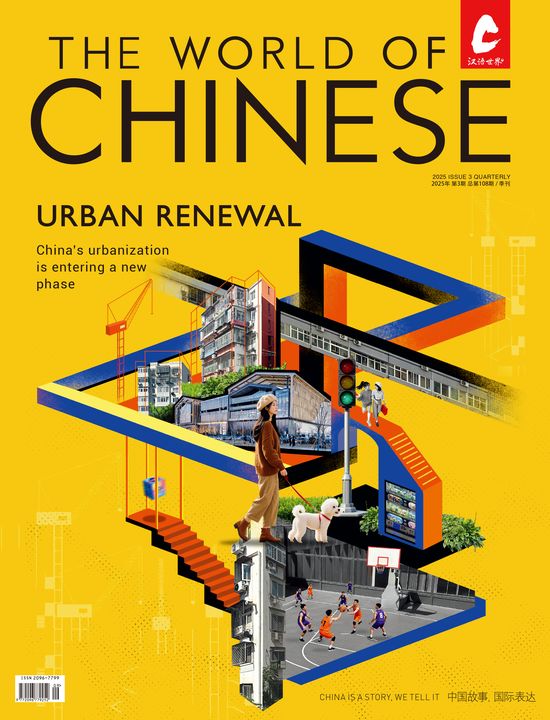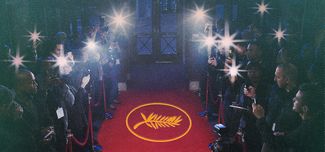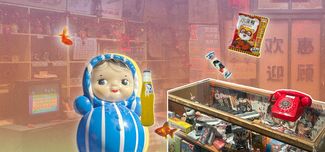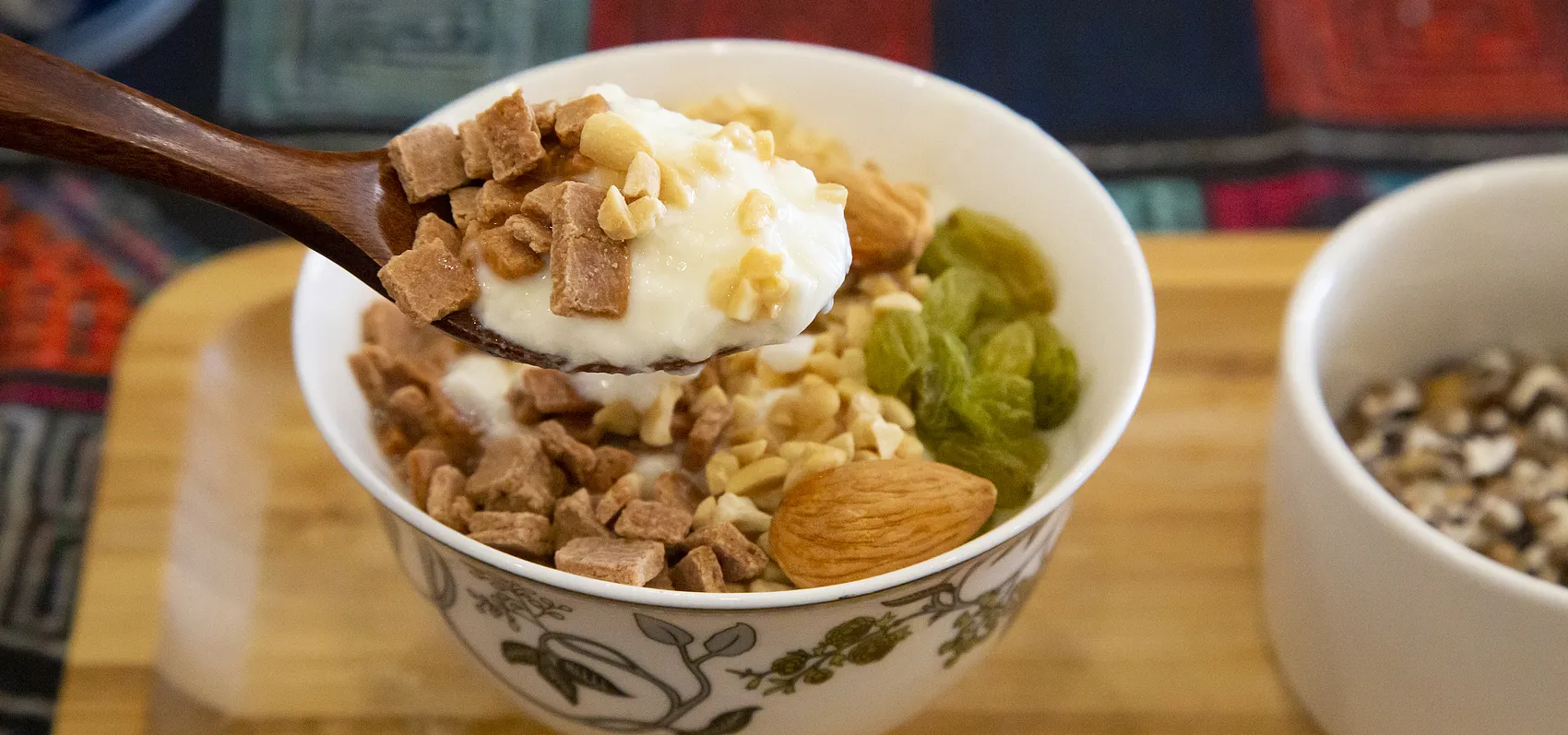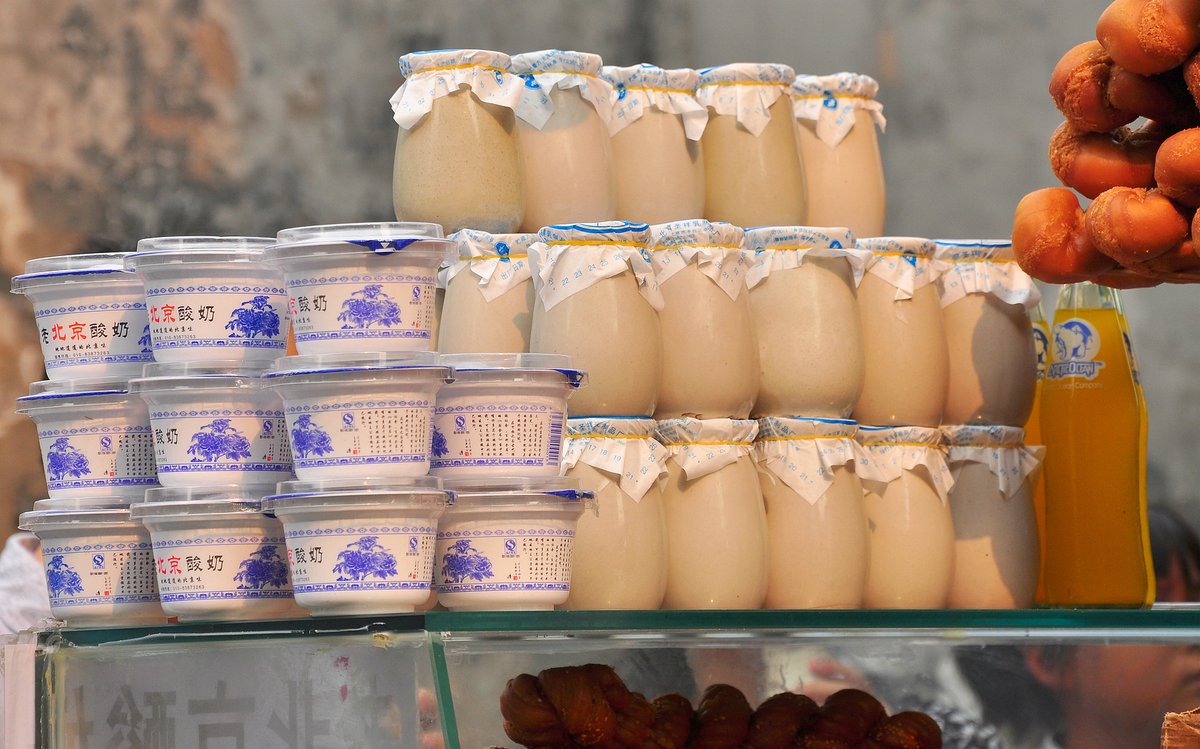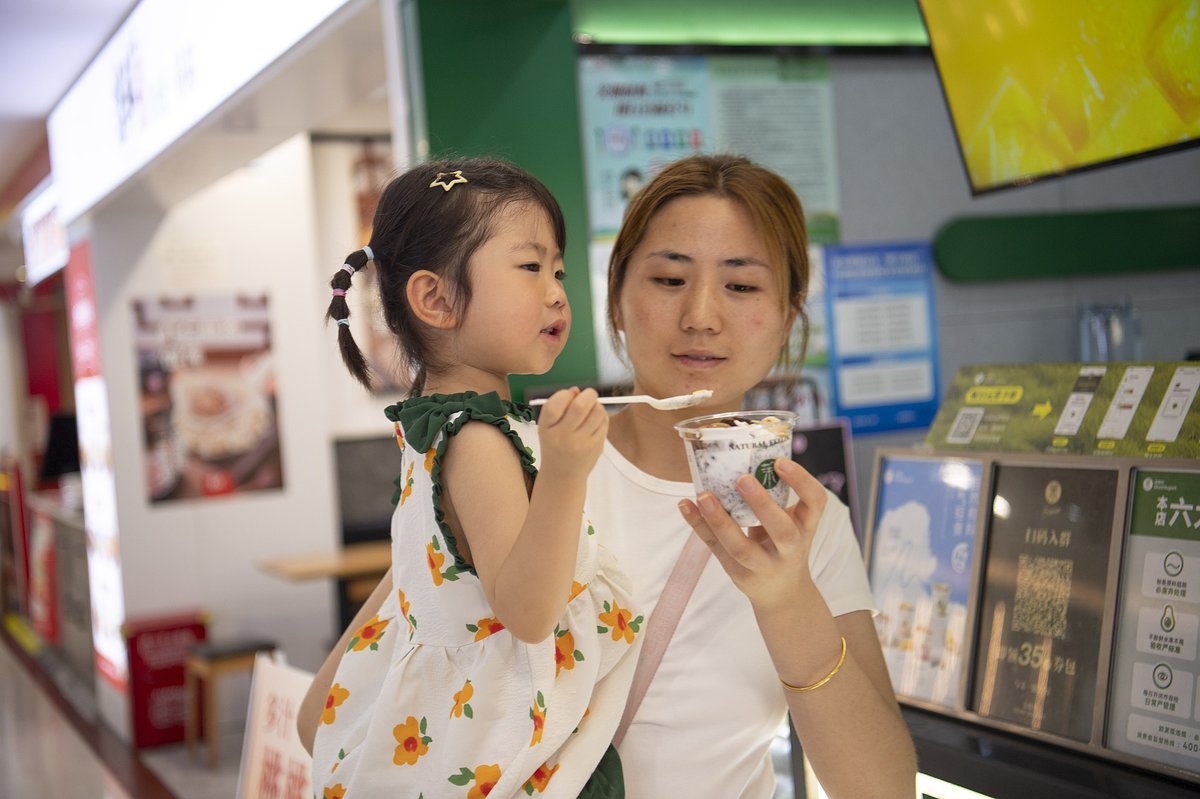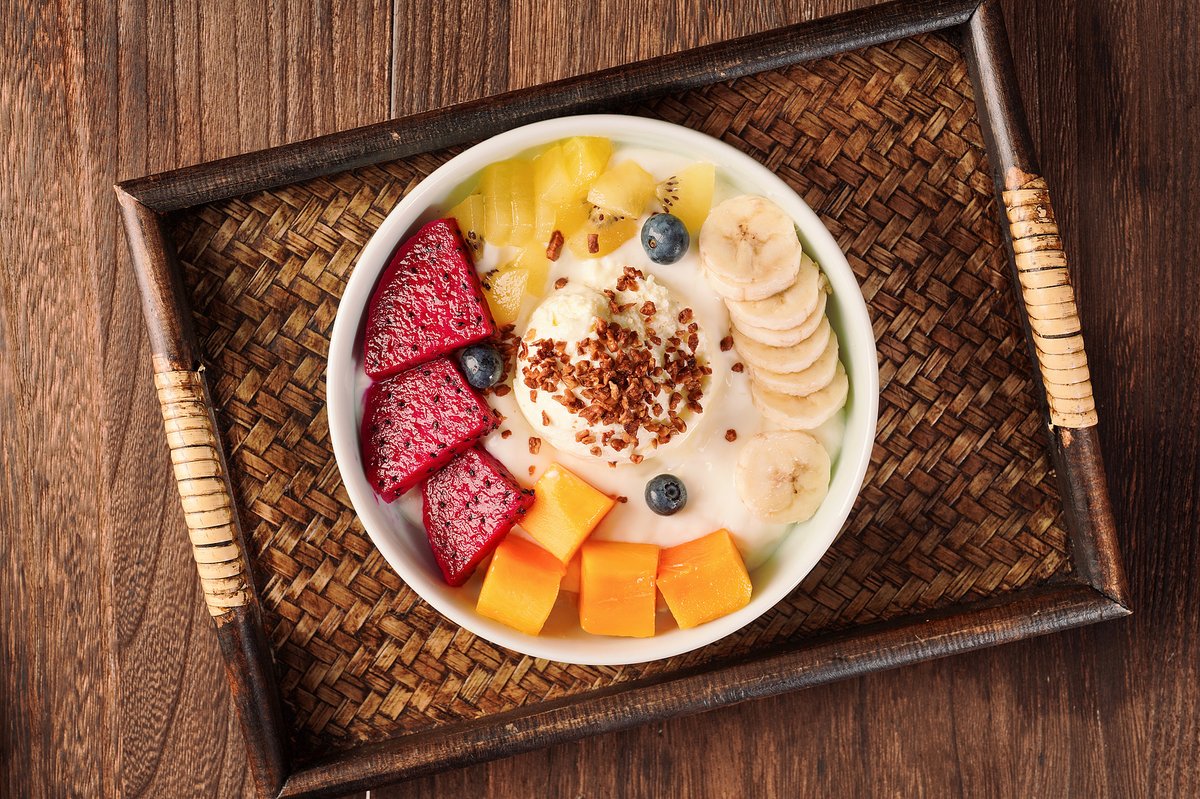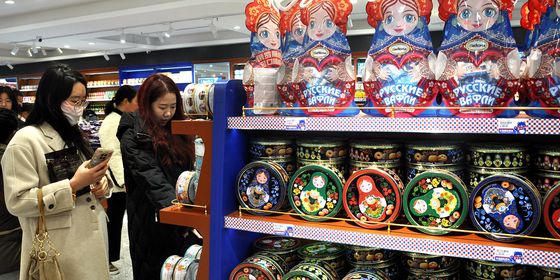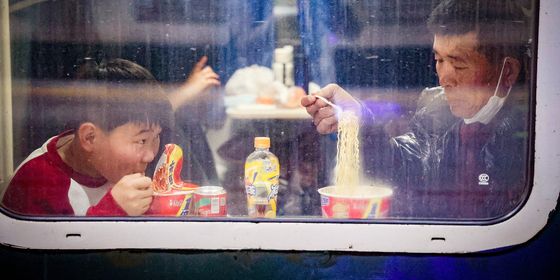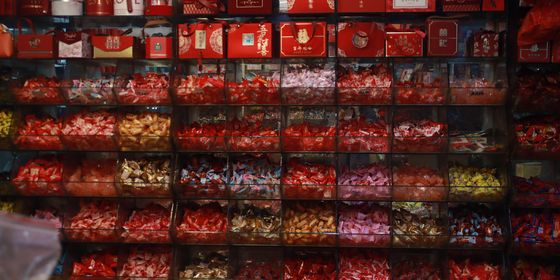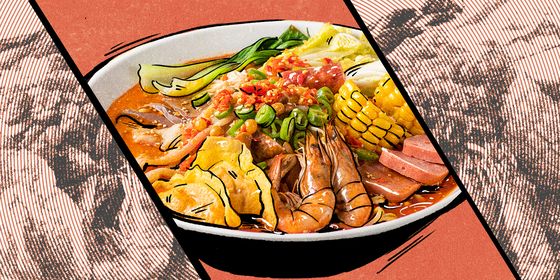Yogurt has long been enjoyed in disparate regions across the country—even honored with a dedicated festival among Tibetan communities. But as it becomes increasingly ubiquitous at tourist sites and faces a string of recent scandals, is public sentiment beginning to sour?
Visit the Forbidden City this summer, and you might find many young Chinese tourists more excited about a small yellow tub of yogurt than the 600-year-old imperial palace itself. Adorning each 8 yuan cup, the slogan playfully reads: “Drink yogurt and go have fun in the Palace,” a message that many visitors appear to have heeded.
This canny bit of marketing comes courtesy of Ziguangyuan, an “old Peking” brand founded in 1912, which, in 2021, rolled out a Mongolian-style “milk skin yogurt,” named for its thick milk skin and creamy body, reminiscent of a Basque cheesecake. This collaboration became a viral sensation online early last year.
Each of Ziguangyuan’s 200-plus stores across the capital reportedly makes over 1,000 cups of yogurt every morning, with stocks usually depleted by noon. During holidays, up to 120,000 cups can be sold in a single day.
Read more about China’s viral cuisines:
- Bones of Industry: Discover Shenyang’s Favorite Street Snack
- Stripped Down: The Story Behind China’s Favorite Snack
- Where Red Pepper Meets Rosé: Yunnan and Guizhou Flavors Fuel China’s Bistro Craze
The yogurt craze has spread well beyond the palace walls, with travelers seen toting bags of Ziguangyuan products home as souvenirs from the city’s several train stations. Delivery services can even be called to dispatch yogurt directly to the concourses.
But yogurt is hardly a new obsession in China. With roots stretching back centuries and once a delicacy of the imperial court, its current popularity may owe more to savvy marketing as a healthy diet food, internet buzz, and the rise of domestic tourism than any newfound appeal.
Mentions of yogurt-like foods in China can be traced back nearly 3,000 years. According to the Book of Rites (《礼记》), a collection of Confucian texts mainly compiled in the Han dynasty (206 BCE – 220 CE), ritual offerings already included the delicacy lao (酪)—a type of fermented milk and the precursor to modern yogurt. The sixth-century agriculturist Jia Sixie (贾思勰) also recorded exactly how the lao was made in the Essential Techniques for the Common People (《齐民要术》), considered the world’s earliest food science encyclopedia.
In the 11th century, an official institution known as the “Dairy Bureau (乳酪院)” was established to produce and supply dairy products, such as lao, to the imperial family. But lao wasn’t just for royals, but also a summer treat among common people. The prolific Southern Song dynasty (1127 – 1279) writer Lu You (陆游) once captured this seasonal delight in verse: “Locust and willow trees cast deep shade, as rain washes away the dust; cherries and fresh lao—together, we savor the first tastes of summer.”
Yogurt even played a key part in the Mongol army’s 12th-century conquests, with horse and cow’s milk constituting an essential part of Genghis Khan’s soldiers’ diet. Prior to setting off on long, often grueling expeditions, they would fill leather pouches with dried milk cakes and water. The cakes fermented en route, serving as a source of nutrition.
When Marco Polo traveled to the Yuan dynasty (1206–1368) capital of Dadu (modern-day Beijing), the Mongol emperor Kublai Khan treated him to “airag,” an alcoholic beverage made from fermented horse milk. According to The Travels of Marco Polo, Mongols mixed yogurt and ice into a dessert named binglao (冰酪). Some even claim that Marco Polo brought this knowledge back to Italy, eventually inspiring the creation of gelato—though there’s little evidence to support this.
The Shoton Festival, meaning “a holiday for eating yogurt,” has become a public celebration among Tibetans since the 17th century. Held annually around the first day of the seventh month in the Tibetan calendar, tens of thousands flock to Drepung Monastery in Lhasa to offer yogurt to monks and receive blessings. The seven-day celebration also features Tibetan opera performances and is now recognized as a national-level intangible cultural heritage.
By the Qing dynasty (1616–1911), Manchu and Mongolian nobles had brought dairy products to Beijing’s imperial court. Emperor Guangxu—China’s penultimate monarch—was even rumored to have died of arsenic poisoning after eating yogurt allegedly laced with poison under orders from Empress Dowager Cixi.
Towards the end of the Qing dynasty, China entered a period of political upheaval and rapid modernization—alongside an influx of foreign influences that reshaped everyday life, including what people ate. Russian-owned yogurt shops had already appeared in Beijing, while in Shanghai’s French Concession, imported bottled yogurt was sold in specialty stores. High-end hotels began serving house-made yogurt to international guests.
That changed in 1911, when a British entrepreneur founded the Shanghai Dairy Company, the forerunner of today’s Bright Dairy & Food, and introduced machine-made yogurt to China, turning yogurt into a modern culinary craze in cosmopolitan Shanghai.
After the founding of the PRC in 1949, yogurt was in short supply, with packaged products only becoming available in a few major cities during the 1950s. It wasn’t until the 1980s that yogurt reentered mass production in China. And while milk consumption has also increased steadily since then, yogurt’s fermentation process reduces its lactose content, making it easier to digest for the country’s lactose-intolerant population.
One of the most iconic products of that time, and one that can still be found in the small convenience stores lining Beijing’s hutongs, are the white, fat-bellied porcelain bottles from the once state-owned Beijing Sanyuan Foods. Sealed with a blue-white waxed paper and secured by a rubber band, the sounds of tinkling bottles on delivery tricycles and yogurt gurgling through straws remain nostalgic emblems for those who grew up with them.
Today, yogurt culture in China is so diverse that nearly every region offers its own unique taste of local life through this dairy specialty. In Yanbian, Jilin province, the Korean ethnic group is known to add yogurt to “makgeolli,” making a creamy version of the fermented rice wine. In Shangri-La, Yunnan province, locals make yogurt using yak milk, with highland barley sprinkled on top, much like the visiting merchants to nearby Xizang over a millennum ago. Meanwhile, in Yunnan’s Dali city, stalls hawk yogurt with rose petals—a nod to the local flowers.
In Kashgar, Xinjiang, serving yogurt becomes a lively spectacle as vendors toss it high into the air before catching it and mixing it with shaved ice and honey. When a catch fails, which happens from time to time, the amused crowd is treated to an unexpected “dairy shower.”

A classic daka or “check in” photo of Ziguangyuan’s “milk skin yogurt” (Screenshot from Xiaohongshu)
But despite some attempts to give the dessert an idiosyncratic spin, the market’s relentless push toward commodification has sparked complaints about yogurt’s growing ubiquity at tourist sites and in regions that haven’t historically embraced it.
“When I was a child, I drank lotus root water. I didn’t taste yogurt until I was older,” says 34-year-old Jing Na from Yuxi, a popular tourist town in Yunnan province. “When a friend visits, I’ll take her to row through the lotus fields on Fuxian Lake, and we’ll bring home some lotus root powder.”
Increasingly, no matter where you visit in China, you’re likely to encounter the same whimsical street signs that read, “The Wind That Misses You Has Blown Me Here,” along with stores selling the “three dependables”: grilled squid, stinky tofu, and a localized take on yogurt.
Visitors have complained that many local yogurt variations are “same same, but different”; served in the same white porcelain bottles, just embellished with a different city’s name. Nevertheless, enough tourists do imbibe to keep sellers in business, lifting up their bottles to get the prerequisite “I was here” shot.
Yogurt has also been at the center of a few food safety scandals in recent years. In 2023, yogurt brand Blueglass rolled out a run of drinks dubbed “chang (畅),” meaning free-flowing. Unfortunately, many consumers reported that it was a little too effective, causing laxative-like adverse reactions such as chronic diarrhea and vomiting, with some diagnosed with acute gastroenteritis. The culprit turned out to be the high level of probiotics—nearly 100 times the recommended daily intake.
In 2024, the same company became embroiled in an even bigger controversy with the release of its “Superboy” drink. Featuring ginseng and deer penis, the yogurt drink was marketed as a “male enhancement” beverage not to be sold to minors. Blueglass was eventually fined 400,000 yuan for containing vulgar and sexually explicit content in the advertisement by China’s market regulatory authority. Though the drink is still available on the store’s menu under the name “Good Spirit.”
Yogurt is now marketed mainly as a healthy, digestion-friendly dessert and even as a weight-loss option. But despite these claims, many consumers have found that some mass-produced yogurts have even higher sugar content than a can of Coke, raising concerns about their actual health benefits.
Still, experts reassured yogurt lovers that it remains a healthy option. “Yogurt can be part of meals throughout the day,” Liu Jing, a nutritionist at Shanghai’s Tongren Hospital, told The Paper in 2017. “As long as it’s paired with a balanced diet, it still offers nutritional value.”
She explained that while Coke may appear lower in calories than some branded yogurt products, that’s because it contains very few nutrients. Yogurt, on the other hand, has more calories because, besides sugar, it also provides nutrients like fat and protein. She added that yogurt itself does not promote weight loss, and if overall calorie intake isn’t properly managed, it can sometimes have the opposite effect.
Other experts have also urged consumers to check the ingredients list before purchasing yogurt products and point out that when made with simpler ingredients, yogurt can be a great source of calcium, especially for those who are lactose intolerant and unable to drink milk.
